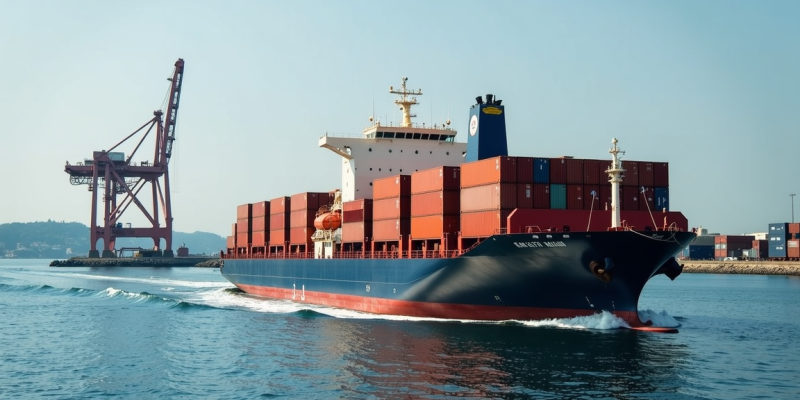
China’s export growth is anticipated to have moderated in May, even as a temporary reduction in US tariffs on Chinese goods offered some respite.
Persistent uncertainties stemming from the still-unresolved trade war with the United States and broader concerns about Sino-US relations are believed to have weighed on shipment volumes, according to a consensus of economists.
Outbound shipments from China are projected to have risen by 5.0% year-on-year in value terms last month.
This forecast, based on the median estimate of 20 economists polled by Reuters, marks a slowdown from the more robust 8.1% jump recorded in April.
Concurrently, imports are forecast to have dropped by 0.9% in May compared to the previous year, a slight widening from the 0.2% dip seen in April.
This suggests continued weakness in domestic demand within the world’s second-largest economy.
The global trade war, characterized by fluctuating tensions in China-US trade ties, has subjected Chinese exporters and their international business partners to a volatile “roller coaster ride” over the past two months.
While a recent hour-and-a-half-long phone call between US President Donald Trump and Chinese leader Xi Jinping late Thursday served to keep a lid on immediate escalations, key contentious issues—such as Beijing’s control over rare earth exports and Washington’s restrictions on chip-related exports—were deferred to future talks, leaving significant uncertainties unresolved.
The tariff truce effect: a temporary reprieve or a new wave of frontloading?
In mid-May, China and the United States reached a 90-day truce in their bruising tariff war, leading to a rollback of most of the triple-digit levies they had imposed on each other’s goods, which had initially taken effect in early April.
These tariffs, along with the broader uncertainties surrounding the global trade order (particularly after the Trump administration ordered a 90-day pause to its “reciprocal tariffs” on other trade partners), had notably accelerated China’s exports in March and April.
During that period, factories rushed to dispatch shipments to the US and other overseas manufacturers in an effort to get ahead of potential new duties.
The temporary lowering of US tariffs on Chinese goods was undoubtedly welcome news for China’s policymakers, who are grappling with shoring up an economy heavily reliant on exports and simultaneously contending with lackluster domestic demand and sagging prices.
However, economists polled by Reuters appear divided on the precise impact of this turnabout from the Geneva trade talks on China’s overall exports last month.
Estimates for May’s export growth ranged widely, from a robust 9.3% expansion to a contraction of 2.5%, highlighting the complex and uncertain dynamics at play.
Some analysts suggest the tariff truce might inadvertently trigger a new round of frontloading by businesses.
Nomura analysts, in a report dated May 23, posited that this could “reduce the urgency for the Chinese government to ‘roll out a sizable stimulus package and start some necessary structural reforms’.”
The Nomura team also estimates that average US tariffs on Chinese imports could remain “hefty at about 42%” even without further hikes, leading them to expect a sharp slowdown in China’s export growth during the second half of the year.
Economic headwinds: manufacturing slowdown and policy responses
While China’s first-quarter economic growth surpassed expectations, any optimism was quickly tempered by the persistent strains in US-China relations.
Recent factory activity data for May indicates that Chinese manufacturers may already be feeling the adverse effects of the tariff disputes.
The official manufacturing purchasing managers’ index (PMI) contracted for a second consecutive month in May.
Similarly, a private-sector survey gauge of manufacturing activity shrank for the first time in eight months, further underscoring the challenges facing the sector.
In response to these economic pressures, China’s central bank took action last month by cutting benchmark lending rates.
This move was aimed at lessening the impact of the trade war on the broader economy.
Additionally, the central bank lowered the ceiling for deposit rates in an effort to offset margin pressure on banks and encourage savers to increase spending or investment.
Despite the export slowdown, China’s trade surplus for May is forecast to be $101.3 billion, an increase from the $96.18 billion recorded in April.
This suggests that while export growth may be moderating, the decline in imports is potentially more pronounced, leading to a wider surplus.
The post China’s May export growth seen slowing to 5.0% amid trade uncertainty: Reuters poll appeared first on Invezz







